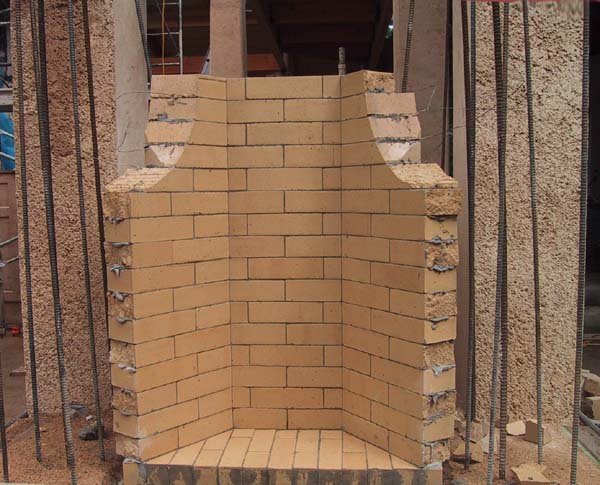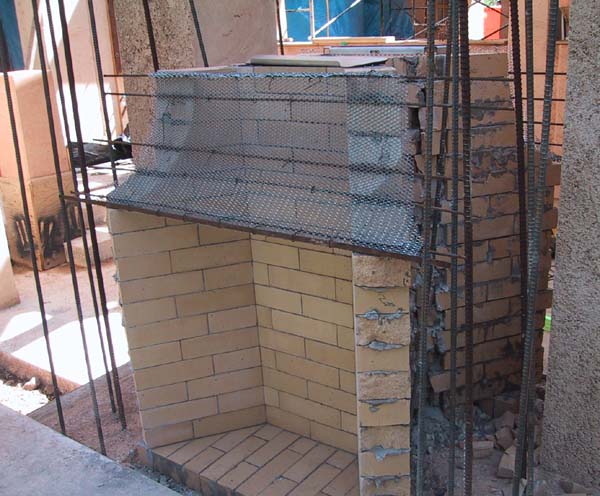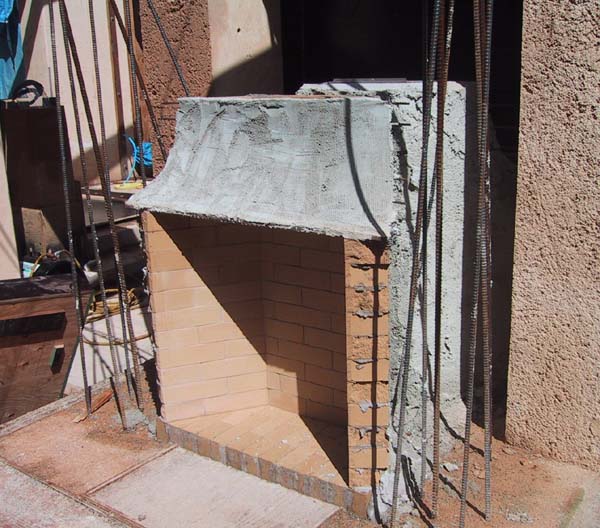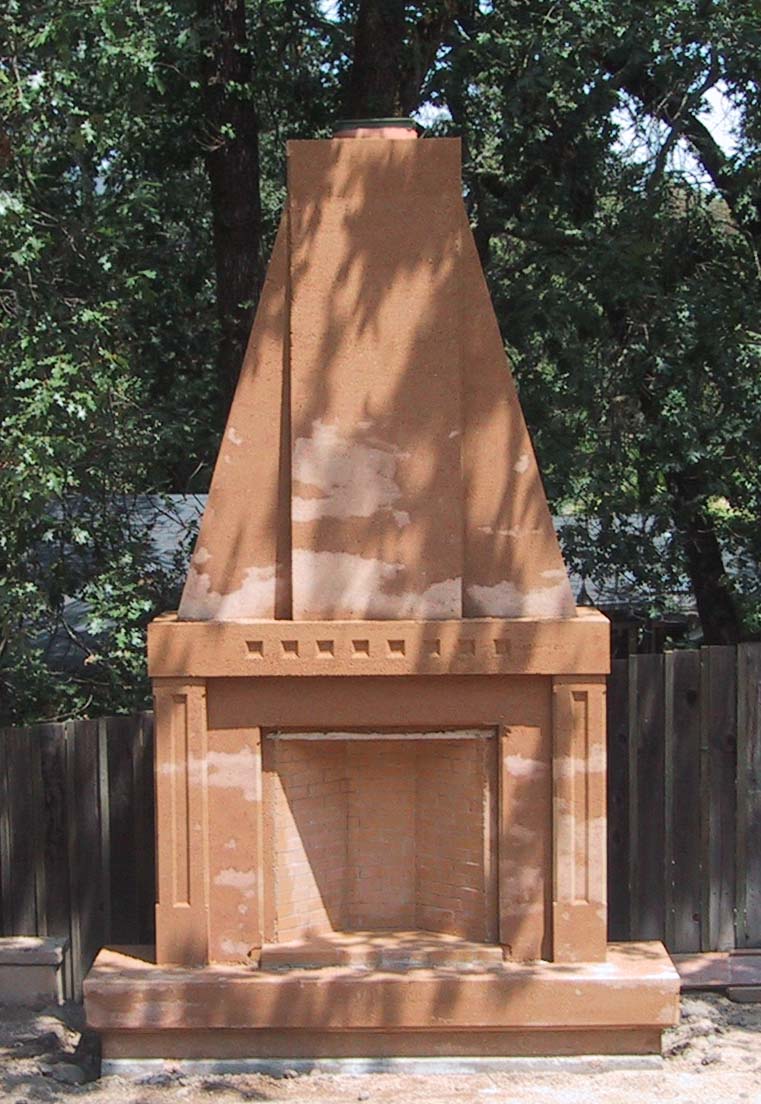|
I'm not sure how I would use the segmented pieces. I would have to push the firebox too deep into the structure to get enough rammed earth "meat" between the segments and the front of the fireplace. Anyway, I'm wondering if there is any way around this requirement?
Thank you,
John Richards
John
. . . I'm sympathetic but you must understand that we have spent hundreds of thousands of dollars developing, testing and marketing our "Certified Rumford Fireplaces". The Superior Clay throat, which dictates the fireplace in plan, is a key part of my being able to assure a building inspector that you, who I have never met, have built a Rumford substantially the same as the Rumford I built and tested in an emissions test lab.
So I won't "certify" your Rumford if you don't use our components but I'd be very interested in your rammed earth techniques and pictures. . . .*
Best,
Jim Buckley
1/29/08
Jim,
Here are some photos of another fireplace and the ferrocement throat.
John




John,
I'm sure that will work. Are you using refractory mortar? Do you worry about the steel expanding and cracking the throat? How much time does it take you? How much would we have to lower the price of the Superior Clay throat for you to think it worth paying for?
You also asked about the segmented throat. It's less expensive and would allow you to run the firebrick up to the damper as you prefer. And we offer "coving extensions" so you don't have to cut curves in your firebrick. I think in a rammed earth enclosure I would fill or grout the throat tiles first so the throat would be strong and in one piece. I don't know how much "cover" you need with rammed earth, but 4" to 6" on a large Rumford would not be excessive. The main reason I would prefer the one-piece throat in a rammed earth wall is that you could set it in ten minutes and ram away. The segmented throat would need bearing surfaces on either side of the firebox as well as the above mentioned preparation of grouting is solid first.
I appreciate your willingness to share your ideas. I'll let you know how the Tibets workshop goes.
Warm regards,
Jim Buckley
Jim
I read somewhere a while back in an article about someone building a rumford fireplace a new approach to throat construction. I can't remember his technique for building the throat but what I do remember and what inspired me to build a throat with ferrocement is that he would finish the throat with a white plaster. He said it never turned black because there is always a thin film of "cool" air flowing over the surface of the throat keeping the soot away and preventing it from getting too hot.
I have gone back and checked all my fireplaces: no color change and no cracks. I don't use refractory mortar, just a rich plaster mix: 3 sand, 1 cement, 1/2 lime. Now, with doors I might get worried since they probably block that air flow allowing the throat to get too hot for the plaster and lath.
It takes me about 4 hours to cut and place the bricks and build the ferrocement throat, which is a lot less than the $1500 - 2000 that the throat costs. $500.00 might be a more reasonable cost for the throat. The quotes I have received in my area (Santa Rosa/Ukiah) price the throat at around $1800, the smoke chamber at $1000 and the damper at $350. I got a quote from somebody in Oregon that priced the whole kit; throat, smoke chamber and damper at $1575 but then with shipping the price is similar to California prices.
John
|

